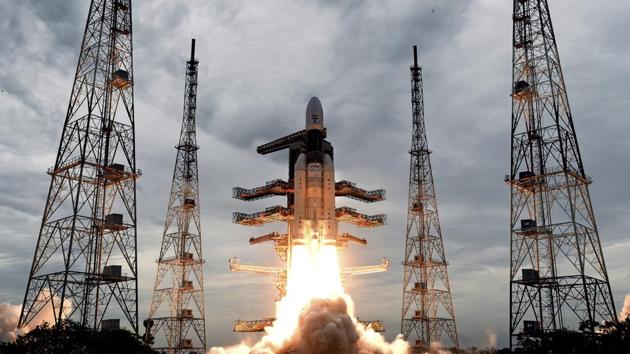Isro: Chandrayaan-2 will move towards moon early tomorrow
The Chandrayaan-2 composite body, including the orbiter, lander, and rover,is now revolving around the Earth. At around 3.30 am on August 14, we are going to have a manoeuvre called trans-lunar injection. By this manoeuvre, the Chandrayaan-2 will leave the Earth and move towards the moon.
In a crucial move on Wednesday early morning,Indian Space Research Organisation (ISRO) scientists will send the Chandrayaan-2 hurtling towards the moon. The spacecraft, which is currently revolving in a highly elliptical orbit around the Earth, will be injected in a trans-lunar path to cover most of the 384,400-km distance between the Earth and the moon.

The manoeuvre will raise the orbit to approximately 266x413,623 km and will happen between 3am and 4am when Chandrayaan-2 nears the highest point in the elliptical orbit around Earth.
“After launching Chandrayaan-2 on July 22, we did five manoeuvres. The Chandrayaan-2 composite body, including the orbiter, lander, and rover,is now revolving around the Earth. At around 3.30 am on August 14, we are going to have a manoeuvre called trans-lunar injection. By this manoeuvre, the Chandrayaan-2 will leave the Earth and move towards the moon,” said ISRO chairperson Dr K Sivan.
The spacecraft will stay in this path for seven days before being inserted into an orbit around the moon on August 20.
Watch| Chandrayaan 2 about to create history: The journey so far
Just like around the Earth, the scientists will have to carry out ‘burns’ or firing of the on-board propulsion engines four times to get the spacecraft into a circular 100x100-km orbit around the moon.
This is where the orbiter will circle around for its mission life of one year. The lander-rover, on the other hand, will separate out and reduce the orbit to 100x30 km before attempting a soft landing on the South Pole of the moon on September 7 at 02.58 am.
This powered decent to the surface of the moon has been described as the “most terrifying 15 minutes”. On its journey towards the lunar surface, the lander-rover have to autonomously decide a landing site between craters Manzinus C and Simpelius N. The landing site has to be close enough to study the shadowy region within the craters, yet at a high point within the reach of the sunrays.
The landing will be aided by images from the on-board high resolution camera, which will be transmitted to Earth, processed and a landing site map uploaded to the lander-rover before the powered descent.
The lander-rover will conduct experiments for a lunar day, equivalent to 14 Earth days. If successful, Chandrayaan-2 will become the only mission in the world to land on the South Pole of the moon.






